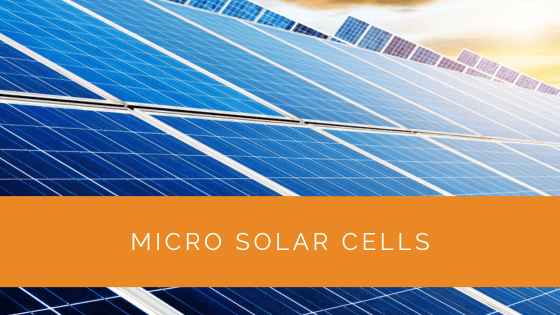In the ever-evolving landscape of renewable energy, researchers and engineers continually strive to harness the sun’s power in increasingly innovative ways. One such innovation that has been gaining attention is the world of “Micro Solar Cells.” These tiny yet mighty solar cells are revolutionizing how we think about solar panels, offering many benefits and applications that hold great promise for the future of renewable energy.
Contents
Key Takeaways
- Micro solar cells, despite their small size, offer significant benefits such as high energy-harvesting efficiency and flexibility.
- They find application in powering various small devices, including wearable technology, and hold promise for integration into everyday objects.
- Ongoing research and advancements aim to address limitations, enhance efficiency, and position micro solar cells as a valuable contributor to a sustainable energy future.
Benefits of Micro Solar Cells
Harnessing Solar Power on a Microscopic Scale
The term “micro solar cells” may not be as familiar as conventional solar panels, but their potential impact is significant. These miniature solar cells enable the conversion of sunlight into electricity on a much smaller scale. Unlike traditional solar panels that can be large and heavy, micro solar cells are lightweight and flexible, making them ideal for various applications.
Advantages of Micro Solar Cells for Energy Harvesting
One of the primary advantages of micro solar cells is their exceptional energy-harvesting capabilities. These tiny powerhouses can efficiently convert even small amounts of light into electrical energy. This high efficiency ensures they can generate power even under low-light conditions, making them suitable for various environments.
Micro Solar Cells vs. Conventional Solar Panels: A Comparison
To truly understand the potential of micro solar cells, it’s essential to compare them to traditional solar panels. While conventional solar panels are designed to generate large amounts of electricity, micro solar cells excel in areas where size and weight are critical. They are not meant to replace traditional panels but complement them in specific applications.
How Micro Solar Cells Work
The Science Behind Micro Solar Cells
Micro solar cells operate on the same fundamental principles as traditional solar panels. They rely on the photovoltaic effect, which occurs when sunlight strikes the surface of a solar cell, causing the release of electrons and generating an electrical current. However, the key difference lies in their size and design.
Photovoltaic Properties of Micro Solar Cells
These miniature wonders are typically made from materials such as silicon, which is known for its excellent photovoltaic properties. The small size of micro solar cells means they can be more precisely engineered to capture and convert sunlight into electricity efficiently.
Energy Conversion at the Microscopic Level
Micro solar cells employ specialized electrical components like diodes to capture and store energy effectively. Their small size allows for faster electron movement and more efficient energy conversion. This produces electrical power, typically measured in milliwatts or even microwatts, depending on the specific application.

Applications of Micro Solar Cells
Powering Tiny Devices: Examples and Use Cases
One of the most exciting aspects of micro solar cells is their potential to power small electronic devices. From IoT (Internet of Things) sensors to medical implants, these miniature power sources can provide a reliable and sustainable energy solution for a wide range of applications. Researchers are exploring ways to integrate micro solar cells into wearable technology, enabling devices to charge themselves while being worn.
Micro Solar Cells in Wearable Technology
Imagine a world where your smartwatch or fitness tracker never needs a battery replacement. With micro solar cells embedded into the surface of these devices, it becomes a reality. These cells can capture energy from ambient light, allowing your wearable technology to operate continuously without regular charging. This enhances the user experience and reduces the environmental impact of disposable batteries.
Embedding Micro Solar Cells in Everyday Objects
Beyond wearable technology, researchers are exploring creative ways to integrate micro solar cells into everyday objects. From solar-powered backpacks to energy-harvesting window blinds, the possibilities are endless. As the efficiency of micro solar cells continues to improve, we can expect to see them incorporated into an even wider array of products, contributing to a more sustainable future.
Advancements in Micro Solar Cell Technology
Cutting-Edge Innovations in Micro Solar Cell Research
Researchers and engineers are continually pushing the boundaries of micro solar cell technology. Nanotechnology plays a significant role in enhancing the efficiency and performance of these tiny solar cells. By manipulating materials at the nanoscale, researchers can create structures that capture and convert sunlight with unprecedented efficiency.
Efficiency Improvements and Miniaturization Trends
Efficiency is a key focus in micro solar cell research. Scientists are working on improving the materials used in these cells to increase their energy conversion rates. Additionally, miniaturization trends are making micro solar cells even smaller and more lightweight, opening up new possibilities for integration into a variety of applications.
Challenges and Considerations
Limitations of Micro Solar Cells
While micro solar cells offer numerous advantages, they also come with their set of limitations. Due to their small size, they may not generate as much power as conventional solar panels. Additionally, their efficiency can be affected by factors such as shading and angle of incidence, making careful placement crucial for optimal performance.
Overcoming Size and Efficiency Challenges
Researchers are actively addressing these challenges. They are developing innovative solutions to enhance the efficiency of micro solar cells and exploring methods to optimize their placement and orientation for maximum energy capture. As technology advances, these limitations are expected to become less restrictive.
Environmental Impact and Sustainability
As with any technology, it’s essential to consider the environmental impact of micro solar cells. Fortunately, their small size and efficient energy production make them a sustainable choice. With proper recycling and disposal practices, micro solar cells can contribute to a cleaner and greener future.
![]()
Future Prospects
The Role of Micro Solar Cells in the Renewable Energy Landscape
Micro solar cells may be small, but their potential impact on the renewable energy landscape is substantial. As researchers and engineers continue to refine and innovate in this field, we can expect to see micro solar cells playing an increasingly prominent role in our quest for sustainable energy solutions.
Micro Solar Cells: Paving the Way for a Brighter Tomorrow
Micro solar cells represent a remarkable advancement in solar technology. Their ability to generate electricity on a miniature scale and their versatility and efficiency make them a valuable addition to the world of renewable energy. While they may not replace conventional solar panels, they offer a complementary solution with great promise to power a wide range of devices and applications sustainably.
Experience Solar Excellence with Us!
Trust in Solar Panels Network USA, where our seasoned experts deliver top-quality solar solutions for homes and businesses nationwide. With a legacy of countless successful installations and a commitment to sustainable energy, we’re your reliable partner in the solar journey. Ready for a brighter, eco-friendly future? Call us now at (855) 427-0058 and harness the power of the sun!
Conclusion
The world of micro solar cells presents a fascinating frontier in renewable energy. These diminutive powerhouses, despite their small size, offer significant benefits in terms of high energy-harvesting efficiency, flexibility, and versatility. Their potential applications span from powering small electronic devices and wearable technology to integrating them into everyday objects, reducing our reliance on disposable batteries and contributing to a more sustainable future.
About the Author
Solar Panels Network USA stands at the forefront of solar energy solutions, driven by a team of seasoned solar engineers and energy consultants. With over decades of experience in delivering high-quality solar installations and maintenance, we are committed to promoting sustainable energy through customer-centric, tailored solutions. Our articles reflect this commitment, crafted collaboratively by experts to provide accurate, up-to-date insights into solar technology, ensuring our readers are well-informed and empowered in their solar energy decisions.

